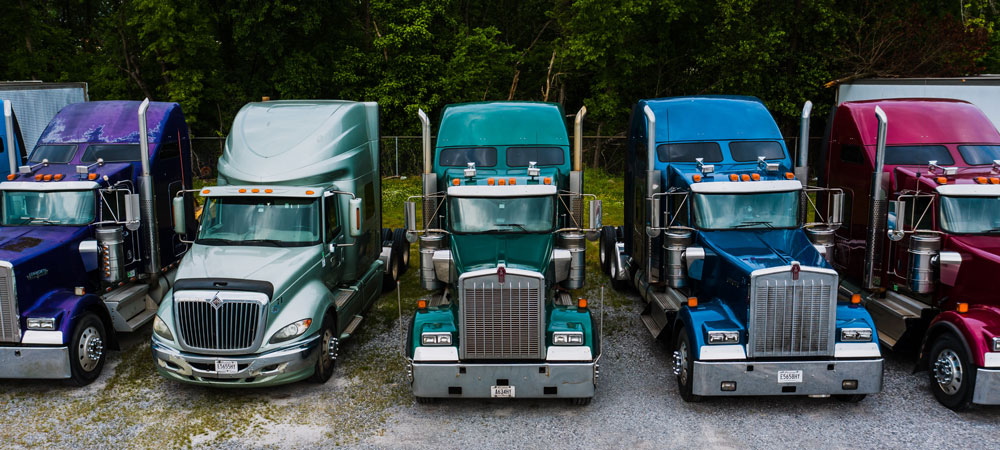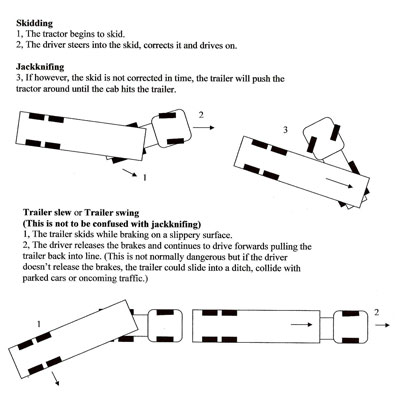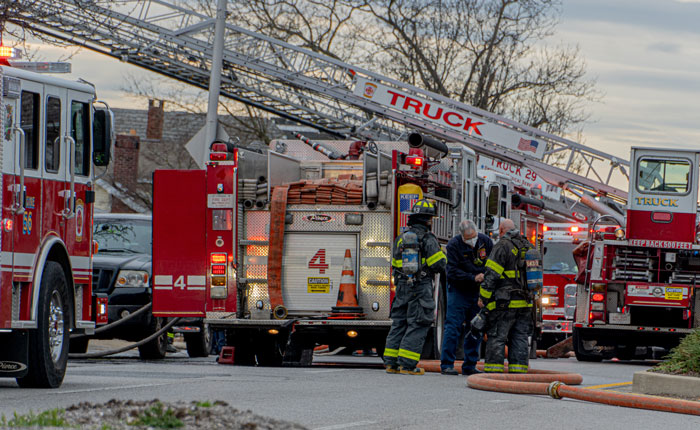
Trucks are the lifeline of our nation’s logistics. Each day, these monster machines travel far and wide, criss-crossing the United States as they deliver goods and raw materials, and creating job opportunities along the way.
Despite their indispensable role in the supply chain, let’s not forget that they pose a significant risk on our roadways, where they leave a trail of injuries, and in the worst case scenario—death.
Images of tragic accidents and the statistics behind them are sobering enough to comprehend the magnitude of the problem and identify potential areas for improvement.
This article is an overview of the truck accident statistics specific to the United States. The statistics will give you a good look at the frequency, causes, and outcomes of these accidents.
By delving into the data, you’ll gain valuable insights into the challenges and risks faced by drivers, passengers, and pedestrians as they go about their lives.
Through these vehicle statistics, you’ll have a comprehensive understanding of:
- Causes of truck accidents, such as negative driver behavior.
- Physical, emotional, and financial impact of truck accidents.
- How truck accident statistics have fluctuated over the years.
- Potential strategies and measures that authorities are taking.
- The role of truck accident attorneys in getting your compensation.
I highly recommend Vegas Valley Injury Law to anyone who’s been hurt in an accident. Our attorney was incredibly helpful throughout the process. He was accessible day or night, and he fought hard to make the insurance company pay out for my injuries.”
— Nathan V., Verified Client
Armed with this knowledge, everyone can work towards implementing effective measures to enhance road safety and reduce the occurrence of these unfortunate incidents.
Understanding the Causes and Effects of Truck Accidents
Given their potential for deadly consequences, large truck crashes have a considerable impact on the society and its economy due to the medical costs, property damage costs, and loss of productivity.
But what is the reason for these accidents in the first place, and how are the victims affected?
Causes of Truck Accidents

Whether the accident is a rollover, a jackknife, or a T-bone accident, the factors contributing to truck accidents in the USA are the same, and they include:
- Driver fatigue due to lack of enough rest.
- Improperly loaded cargo that shifts or falls off the truck.
- Speeding, which renders drivers incapable of stopping on time.
- Drivers with little to no training who lack skills and make poor decisions.
- Distracted driving as a result of texting, browsing, or talking on the phone.
- Poorly maintained trucks whose systems compromise their performance.
- Aggressive driving, such as tailgating or sudden lane changes.
- Driving under the influence (DUI) of medication, alcohol, or drugs.
Safety Tip: Maintain a safe following distance from trucks to allow for greater stopping distance and avoid potential collisions.
Impact of Truck Accidents on the Victims
Truck accidents are unfortunate incidents that leave physical, emotional, and financial repercussions on their victims.
In terms of physical impact, those lucky enough escape with minor injuries such as fractured bones, whiplash, or cuts and abrasions. However, some endure serious injuries such as severe burns that lead to disfigurement, or limb injuries that require amputation.
Emotionally, it’s not uncommon for truck accident victims to experience trauma from the experience. They may suffer depression, nightmares, flashbacks, and mood disorders that affect the quality of their lives.
The financial impact of truck accidents leaves victims with medical bills, lost wages, funeral expenses, and future medical and therapy costs.
The table below expands on the financial consequences faced by truck accident victims.
| Financial Impact | Description |
| Medical bills | Costs associated with medical treatment, surgeries, hospital stays, and rehabilitation |
| Lost wages | Income lost due to the inability to work during recovery or disability |
| Funeral expenses | Costs related to funeral arrangements and memorial services |
| Future medical and therapy | Anticipated costs for ongoing medical care, therapy, and rehabilitation |
| Legal fees | Expenses incurred when hiring an attorney to pursue compensation claims |
An attorney is what you need after a truck accident. On your own, trucking and insurance companies will take you on a never-ending cycle as you seek compensation.
But experienced truck accident lawyers know the ins and outs of the legal process, and they’ll see to it that you’re compensated where you’re due.
These guys are the best of the best. The settlement was not looking good after I had my accident, but after hiring this law firm they refused to stop until I got a fair settlement. They clearly worked hard to make sure I was properly represented.”
— Jeffrey H., Verified Client
In the next section, we’ll examine truck accident statistics in the USA and later on look at the measures that are being taken to tackle this problem.
Unveiling Truck Accident Statistics in the USA

- According to the National Highway Traffic Safety Administration (NHTSA), there were 37 fatal collisions involving a large truck in 2017.
- 71% of people who died in large truck crashes in 2020 were occupants of the smaller vehicles.
- Only 5% of fatal road traffic collisions involving large trucks occurred in work zones.
- For every one million people in the USA in 2020, there were 13.49 fatal large truck crashes, which was a 27% increase from 2010.
- Out of 4,778 truck drivers involved in fatal accidents in 2020, 7% were 25 years old or younger, while 6% were 66 years old or older.
- In 2020, 14% (826) of large truck occupants were not wearing safety belts when the accident happened.
- The number of people injured in crashes involving large trucks and buses decreased from 112,000 in 2016 to 108,000 in 2020.
- 4,965 people died in truck accidents in 2020. This was a decrease from the previous year, which saw 5,032 deaths.
- More than 650 people died in Nevada after being involved in severe accidents between 2015 and 2019. Out of the accidents, 10% involved large trucks.
- In 2021, 117,300 large trucks involved in a crash resulted in an injury. This was a 12% increase from 2020.
- 4,840 large trucks were involved in fatal crashes in 2020, which was a decrease of 4% from the previous year.
- 66% of fatal truck crashes in 2020 happened on weekdays (6:00 am mon to 5:59 pm Friday).
- Long-haul trucks cause serious truck crashes, injuring 1 in 3 truck drivers during their careers.
- Truck tractors pulling a single semi-trailer accounted for 53% of large trucks involved in fatal crashes in 2020.
- Truck tractors pulling two trailers made up 3% of large trucks involved in fatal crashes in 2020.
- Truck tractors pulling three trailers accounted for less than 0.1% of all large trucks involved in fatal crashes in 2020.
- One-ninth of all traffic fatalities in the past five years involved large trucks, though they contributed to only 3% of registered vehicles.
- Large trucks weighing 10,001 to 14,000 pounds that were involved in fatal crashes between 2018 and 2020 increased from 635 to 724.
- From 2018 to 2020, the number of medium and heavy pickup truck accidents increased from 40 to 481.
- Nearly one-fourth (24%) of all large truck drivers involved in fatal crashes in 2008 had at least one previous speeding conviction compared to 18% of passenger car drivers involved in fatal crashes.
- 36% of truck accidents in 2021 happened on interstates and freeways, and 16% happened on minor roads.
- 5,700 large trucks were involved in fatal crashes. This was an 18% increase from 2020 and a 49% increase in the last 10 years.
- In 2021, large trucks accounted for 9% of all vehicles involved in fatal crashes. They also accounted for 5% of all registered vehicles, and 10% of total vehicle miles traveled.
- Most fatal crashes involving large trucks occurred in rural areas (64%), during the daytime (67%), and on weekdays (80%).
- In the majority of deaths in large truck accidents, 17% are truck occupants, while 11% are primarily pedestrians and bicyclists.
- 55% of fatal crashes involving large commercial vehicles and trucks happened in rural areas.
- In 2020, 4,998 large trucks were involved in fatal crashes with buses, which was a 5% decrease from the previous year.
- Single-vehicle truck crashes that involved a bicyclist, pedestrian, or non-motorized vehicle made up 22% of all fatal crashes.
- 3% of drivers involved in truck accidents in 2020 had high blood alcohol concentrations (BACs).
- In 91% of fatal head-on collisions between a large truck and a passenger vehicle, the passenger vehicle crossed the median into the truck’s lane of travel.
- From 2019 to 2020, there was a 40% decrease in the number of non-occupants injured, a 9% decrease in the number of occupants of other vehicles killed, and a 2% decrease in the number of truck occupants killed.
- 50% of large crash deaths in 2021 occurred between 6 am and 3 pm, compared to 28% of accidents not involving large trucks.
- In 2020, 299 of the 4,778 truck drivers involved in fatal crashes tested positive for at least one drug.
- Large commercial trucks account for about 7,000 fires each year, but this is less than 3% of fires involving all vehicles on the highway.
- About 19% of large truck drivers involved in a fatal crash had at least one previous speeding conviction.
- Cargo with hazardous material such as gasoline accounted for 68% of the accidents as the cargo was released from their compartments in the trucks.
- In 2021, 74% of deaths resulting from large truck accidents were occupants of tractor trailers, while 27% were in single-unit trucks.
- 63% of crashes between 2016 and 2021 happened during daylight, while 6% happened in construction zones.
- In a study of 239 truck accidents in which a truck rolled over, almost half resulted from failure to adjust the speed to the curves on the road, brakes condition, road surface, the load being carried, and intersection conditions.
- In 9% of crashes involving a truck and another vehicle, the other vehicle was turning. In another 9%, the truck or the other vehicle was negotiating a curve. In 8%, the truck or other vehicle was stopped or parked in a traffic lane (6% and 2%, respectively).
- In 2021, 97% of vehicle occupants killed in two-vehicle crashes involving a large truck and a passenger vehicle were occupants of the passenger vehicle.
- 63% of large truck occupants killed in multiple vehicle crashes in 2021 collided with another large truck.
- Overturns (rollovers) happened in 4% of all fatal crashes involving large trucks and 2% of all non-fatal crashes involving large trucks.
- In 2021, 48% of deaths resulting from truck crashes occurred on major roads other than interstates and freeways.
- In 2008, 2% of the truck drivers involved in fatal crashes had a BAC level of 0.08 or higher.
- Large trucks are involved in only 8% of fatal crashes per year, but they’re also involved in 17% of fatal fires.
- Large trucks only accounted for 3.7% of all highway vehicles registered, but they accounted for 11.8% of all fatal crashes.
- From 2019 to 2020, there was a 7% decrease in the number of occupants killed in the truck, and a 2% decrease of occupants killed in the other vehicle involved in a truck accident.
- In 30% of two-vehicle fatal crashes involving a large truck and another vehicle, both vehicles were impacted in the front. The truck was struck in the rear 3.2 times as often as the other vehicle (19% and 6%, respectively.
- Research studies have found that car drivers are primarily at fault in approximately 70–75% of fatal car truck crashes
The Takeaway From USA Truck Accident Statistics
The analysis of USA truck accident statistics provides valuable insights into the state of road safety in the country.
By examining accident rates, contributing factors, and their impact, we can identify crucial areas for improvement.
These statistics highlight the urgency for implementing proactive measures to reduce truck accidents and enhance road safety.
From addressing driver behavior and improving infrastructure to ensuring vehicle maintenance, stakeholders must work collaboratively to mitigate the risks associated with truck accidents.
When we prioritize safety initiatives and foster a culture of responsible driving, we can create a safer environment for all road users.
The key takeaways from these statistics is the importance of continuous efforts to minimize truck accidents and pave the way for safer roads.
How Relevant Authorities Are Tackling the Situation
The Federal Motor Carrier Safety Administration’s (FMCSA) office of research, analysis and technology has a mission—to reduce the number and severity of motor vehicle accidents, which includes trucks.
And so, they continue gathering statistics, providing collision data and conducting numerous studies towards discovering and understanding the accident trends.
One of these studies includes the Commercial Motor Vehicle Driver Restart Study, which measures and compares the fatigue and safety performance of truck drivers.
The most recent Motor Carrier Safety Progress Report was released on March 31 by FMCSA, and it contains the carrier investigations conducted, the violations cited during the investigation, and the investigation follow-on instructions.
Besides conducting studies and releasing data, FMCSA continues to educate drivers of passenger vehicles. They remind them that they can avoid truck accidents by staying away from a truck’s blind spots and being aware of a truck’s long stopping distance and wide turn.
Related Reading: 4 Top Considerations When Choosing a Truck Accident Attorney in Las Vegas
How Vegas Valley Injury Law Can Help If You’re Involved In a Truck Accident in Las Vegas

Getting involved in a truck accident isn’t the end of the road. You have a legal right to claim compensation for the physical, emotional, and financial damage you’ve encountered.
At Vegas Valley Injury Law, we go toe-to-toe with insurance and trucking companies to ensure you receive maximum compensation under Nevada Law.
We provide some of the most dedicated and compassionate personal law injury services in Las Vegas, and we’ll help you get compensation for damages from truck accidents, drunk driving accidents, hit and runs, taxi cab accidents, and more.
When you rely on Garrett and his team to handle your case, you’re choosing a proven team. We’ll gather critical evidence about the accident and oversee the success of your case from start to finish, so that you focus on recovering.
Garrett and his team at Vegas Valley Injury Law went above and beyond for me. They were constantly checking in and keeping me aware of my case status. Always available to help with my questions and concerns. I’d recommend them to anyone.”
— Casey M., Verified Client
Want to learn more about what truck accident lawyers do? Watch the video below.
Learn More: How to Handle a Hit and Run Accident: Our 5 Step Process